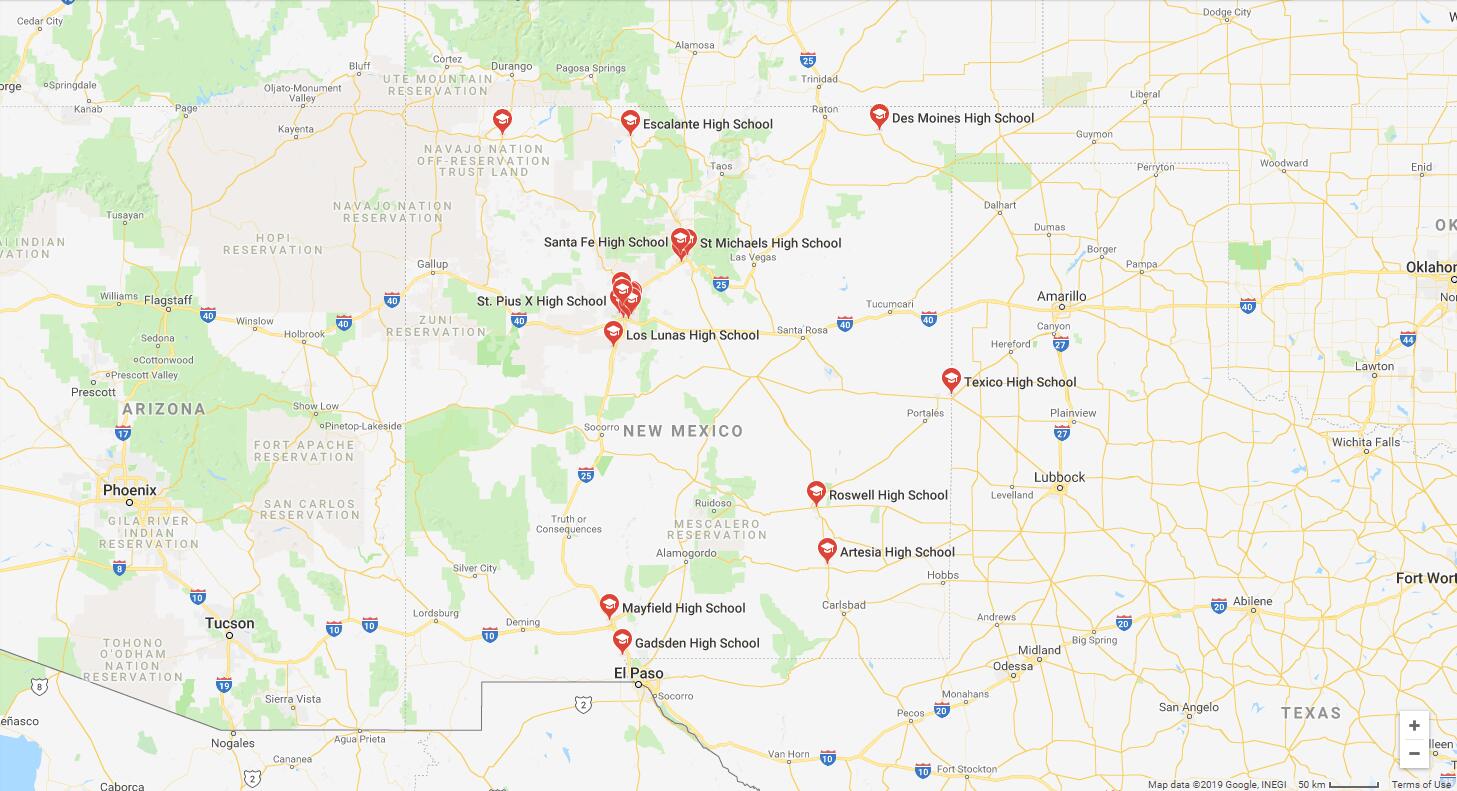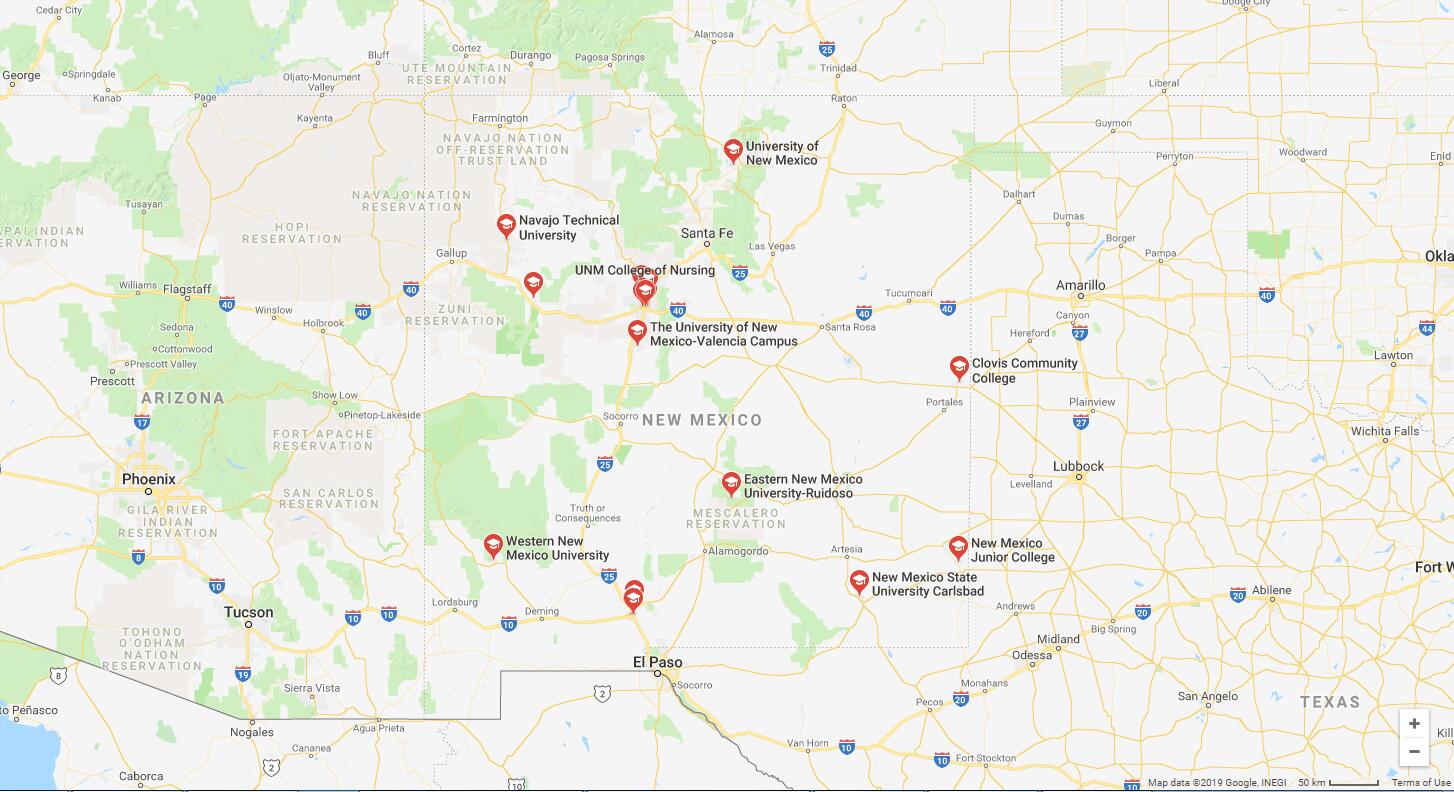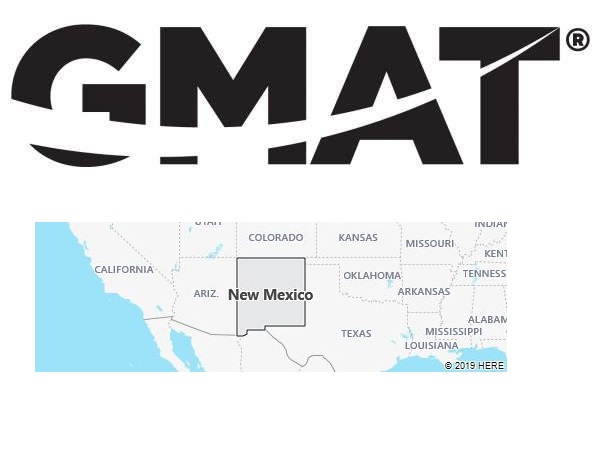New Mexico is a mountainous state in the southwestern United States, one of the so-called Mountain States. The capital is Santa Fe and the largest city is Albuquerque. Other major cities are Las Cruces, Roswell, Farmington and Rio Rancho. The official motto of the state is “Grows on the go” (lat. Crescit Eundo). The official nickname is “Land of Enchantment” (Eng. Land of Enchantment, Spanish. Tierra de Encanto).
STATE NAME
The name of the state of New Mexico comes from the Spanish Nuevo Mexico (“New Mexico”). “New Mexico” the Spaniards called the land in the upper reaches of the Rio Grande in the XVI century. When in the middle of the 19th century these territories began to belong to the United States, the name was preserved only by changing the sound to an anglicized one: “New Mexico” instead of “Nuevo Mexico”. The word Mexico, which gave the name to the state of Mexico, its capital Mexico City and the US state of New Mexico, comes from the language of the ancient Aztecs and means “place of god”.
GEOGRAPHY
The state of New Mexico is located in the Western United States and belongs to the mountainous states of the United States. The area of \u200b\u200bNew Mexico is 315,194 km2 (fifth place among the states of the USA. New Mexico borders on the states of Arizona in the west, Colorado in the north, Oklahoma in the northeast and Texas in the east and southeast. The extreme northwest of New Mexico is the so-called “four corners” point, at which the borders of four states meet at right angles along the meridians and parallels. In the south, New Mexico borders on Mexico. New Mexico is part of the US Mountain Time Zone.
On the territory of New Mexico, four large physical and geographical regions are distinguished – the Rocky Mountains, the Colorado Plateau, the Great Plains and the “Ridges and Basins”. In the central part of northern New Mexico, the southern spurs of the Rocky Mountains stretch – the Sangre de Cristo ridges (in Spanish – “The Blood of Christ”, it is believed that the ridge got its name because of the characteristic red color of the rocks that form it, especially at dawn or sunset ) and San Juan, as well as the Hemez and Sandia mountain ranges. The height of most of the mountains of Sangre de Cristo exceeds 3,500 meters above sea level, it is here that the highest point of the state – Mount Wheeler Peak (4,013 meters) is located. A significant part of the mountains in the north of New Mexico is covered with forests, including those protected by the state (Carson and Santa Fe National Forests).
Between the mountain ranges from north to south flows the largest river in New Mexico (and, according to various estimates, the fourth or fifth longest river in North America) – the Rio Grande. Its origins are located in southwestern Colorado, and south of the Rio Grande forms the border between the United States (namely the state of Texas) and Mexico.
CLIMATE
New Mexico has an arid climate with distinct seasons, rather hot in the steppes and deserts, and much cooler in the mountains. In New Mexico’s largest city, Albuquerque, located in the central part of the state, the weather is usually sunny and dry. The winter is short, the average temperature in January is usually -5°C to 9°C, and the summer is hot, in July the temperature usually ranges from 18°C to 34°C. In the state capital city of Santa Fe, which is located at an altitude of more than 2,100 meters above sea level (the “highest” state capital in the United States), the coldest month is usually, and in the hottest – from 12 ° C to 30 ° C. In the south of New Mexico, in the city of Alamogordo, the average winter temperature ranges from -2°C to 13°C, and in summer – from 18°C to 35°C.
ECONOMY
New Mexico’s economy is based on mining, US government funding, tourism, and, to a lesser extent, agriculture and industry.
New Mexico ranks sixth among the US states in terms of oil production and provides more than 5% of the country’s natural gas production. In addition, the bowels of New Mexico are rich in ores containing copper, tin, manganese, beryllium, molybdenum, zinc, lead and other metals; potassium salts; perlite and other minerals. Despite the fact that New Mexico ranks second (after Wyoming) in the United States in terms of explored reserves of uranium ores, at present they are almost not mined, including due to radioactive contamination of the environment.
TOURISM
One of New Mexico’s food tourism routes, the Chili Roads, passes through the Hatch. In general, tourism is one of the most important sectors of the state’s economy. Numerous tourists are attracted by both natural (Carlsbad Caves National Park, White Sands Reserve and others) and historical (Aztec Ruins National Monument, Pecos National Historical Park etc) attractions. No less interesting are the various tourist-oriented events held in the state, including the Albuquerque Balloon Festival (which is considered the largest in the world) or the annual Fiesta Santa Fe in the capital of New Mexico.
In the desert expanses of southwestern New Mexico, construction continues on Spaceport America, the world’s first commercial spaceport, which is planned to be used to launch ships with “space tourists”.
Largest Counties in New Mexico
Originally a Spanish and later Mexican territory, New Mexico became a U.S. state in 1912. It has a rich Native American and Hispanic heritage. New Mexico has 33 counties. 10 Largest Counties in New Mexico 1. Bernalillo County County Facts…
Read more



























